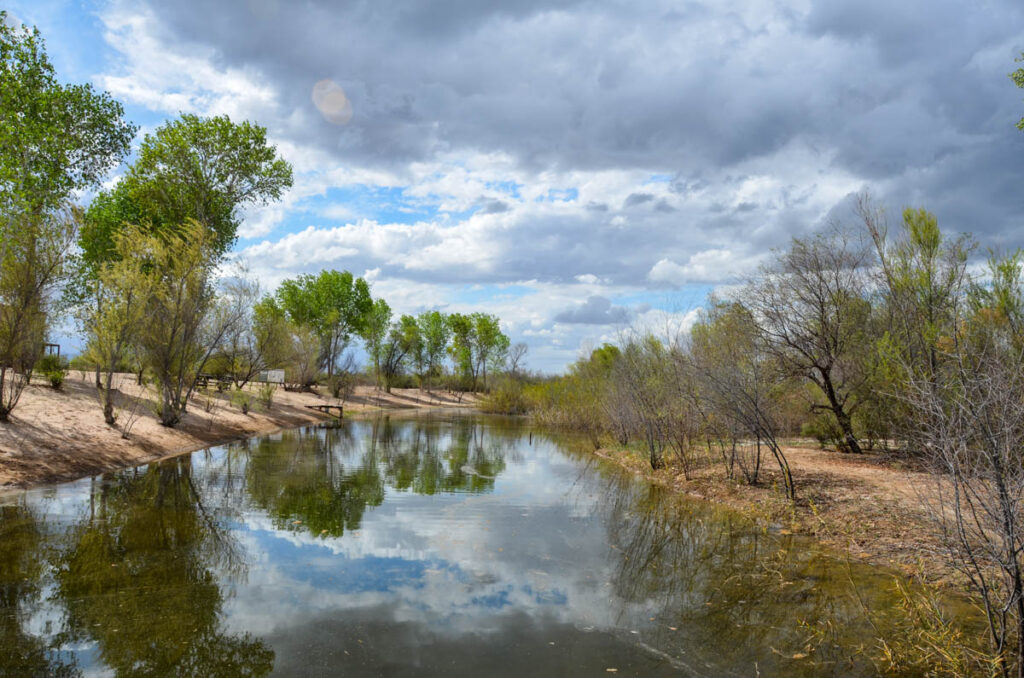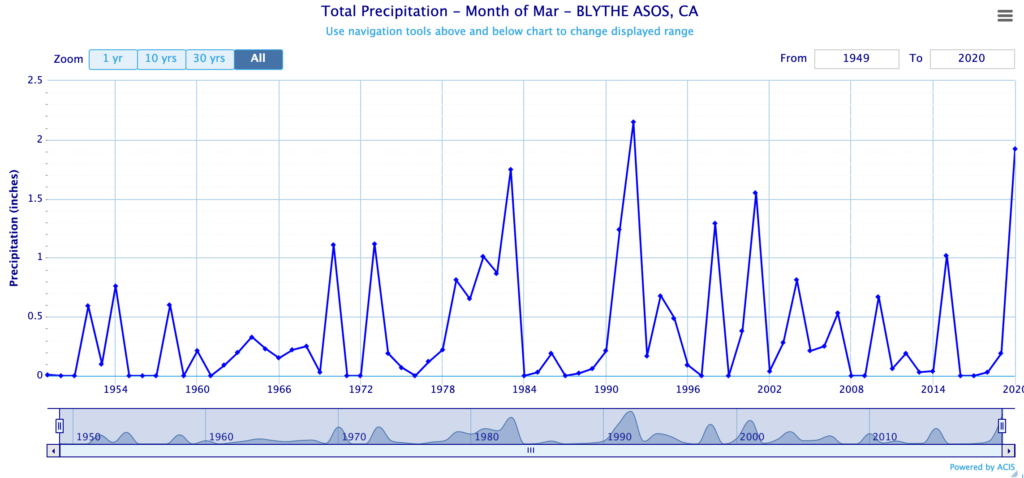
water flowing at Laguna Grande, March 2 2020
UNM Water Resources Program student Annalise Porter tipped me off to this, from Audubon’s Jennifer Pitt:
At a time when the world feels bleak and uncertain, I want to share a sign of hope: it has been raining, and the Colorado River is flowing in its delta #CORiver ?@RaiseRiver? pic.twitter.com/6W8iRcvm3r
— Jennifer Pitt (@JnPitt) April 2, 2020
Jennifer took the picture in early March at the Laguna Grande restoration site along the Colorado River in Mexico after a pouring rain. With a crazy wet March down there, water’s been flowing off of the normally arid landscape into the old river channel, which is dry mostly all the time. This isn’t a managed environmental flow release along the lines of what we saw in spring 2014 – it just rained!
Working with University of New Mexico Water Resources Program students this spring modeling the Lower Colorado, we’ve been watching the impact of the wet weather north of the border. Blythe, for example, had its second wettest March in records going back 70 years – here’s an updated version of the graph we “discussed” in class this week:

Blythe’s wet March 2020
As a result the Palo Verde Irrigation District, for example only diverted 38,000 acre feet of water from the Colorado in March, a bit more than half of what it took in March a year ago. Imperial Irrigation District’s March diversions this year were about two-thirds of what it took last year.
Buried in the Bureau of Reclamation data on flows in this stretch of the river is a remarkable amount of runoff from wetted lands into the river, which is what Jennifer said is happening in Mexico. When it rains, ag water demand goes down, environmental flows go up. As Jennifer said, in the midst of the bleak and uncertain, this is a nice thing to see.

For Colorado River aficionados, I had an idea to bring water back to the end of the river.
1. the delta is almost always dry.
2. sea level is rising.
3. there is a huge amount of solar energy in the area.
4. using a technique that has worked in other areas.
To do:
1. build a low earthen dam at the edge of the Gulf salt water.
2. install solar powered pumps.
3. slowly pump water from the Gulf to upstream of the dam.
4. create a salt water marsh.
5. introduce salt tolerant plants and salt water animals.
6. create habitat for birds.
7. harvest edible plants.
8. harvest the fishery.
9. provide local jobs.
10. ecotourism.
11. reclaim desert areas
Please pass this on if you think it might be worth trying.
so glad to hear!